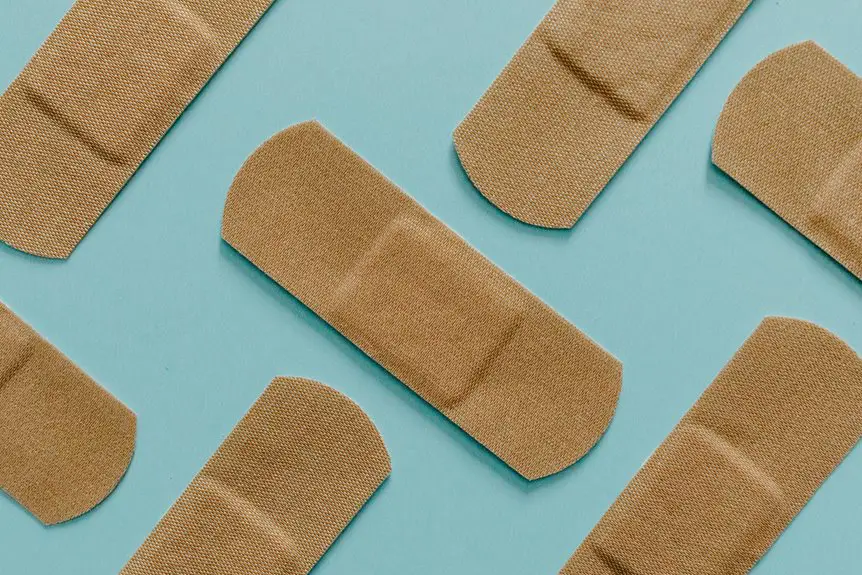When you’re heading to the beach, choosing the right fabric for your cover-up is essential. You want something that not only protects you from the sun but also dries quickly after a swim. Fabrics like polyester and nylon blends offer excellent UPF ratings while remaining lightweight and breathable. But there’s more to take into account than just sun safety and drying time. Let’s explore what else you should know about the best beach cover-up materials.
Table of Contents
Key Takeaways
- Fabrics with a UPF rating of 50 effectively block about 98% of harmful UV rays, offering excellent sun protection.
- Quick-drying materials, like polyester blends, wick moisture away and enhance comfort during water activities and lounging.
- Lightweight and breathable fabrics keep you cool and comfortable, making them ideal for beach cover-ups.
- Durable fabrics resist sun, sand, and surf, ensuring longevity and color retention after multiple washes and sun exposure.
- Sustainable options like organic cotton and recycled polyester reduce environmental impact while providing great functionality for beach wear.
Understanding UPF and UV Protection in Fabrics
When you’re choosing fabrics for beach cover-ups, it’s essential to understand UPF (Ultraviolet Protection Factor) and how it contributes to UV protection.
UPF ratings indicate how much UV radiation can penetrate the fabric. A higher UPF rating means more protection for your skin. For example, a fabric with a UPF of 50 blocks about 98% of UV rays, offering substantial safety against sunburn and long-term skin damage.
UPF ratings measure fabric’s UV protection; a UPF of 50 blocks about 98% of harmful rays, safeguarding your skin.
When shopping, look for materials specifically designed for sun protection, like polyester and nylon blends, which typically offer better UPF ratings.
Remember, while darker colors and tighter weaves generally provide more protection, it’s vital to balance style with safety.
Benefits of Quick-Drying Materials for Beach Wear
As you enjoy a day at the beach, quick-drying materials can make a significant difference in your comfort and convenience.
These fabrics are designed to wick moisture away from your skin, helping you stay dry and comfortable throughout the day.
Here are some benefits of quick-drying materials:
- Reduced Chafing: They minimize friction against your skin, preventing discomfort when you’re active.
- Easy Switch: You can easily change from water activities to lounging without feeling soggy.
- Less Odor: Quick-drying fabrics often resist odor buildup, keeping you fresh even after a long day in the sun.
Choosing quick-drying materials for your beach cover-ups means more fun in the sun and less time worrying about soggy clothes.
Enjoy your beach day to the fullest!
Comfort Features to Look for in Beach Cover-Ups
Finding the right beach cover-up involves focusing on key comfort features that enhance your experience.
Look for lightweight materials that feel soft against your skin, ensuring you stay comfortable all day. Breathable fabrics are a must; they’ll keep you cool while you soak up the sun.
Choose lightweight, soft materials to stay comfortable and cool while enjoying the sun at the beach.
Consider styles with adjustable straps or elastic waistbands to customize the fit to your liking. A loose, relaxed silhouette allows for easy movement, making it perfect for beach activities.
Additionally, opt for cover-ups with pockets to conveniently store essentials like sunscreen or your phone.
Finally, choose materials that won’t irritate your skin, especially when wet, so you can enjoy your time on the beach without discomfort.
Durability and Resistance of Fabrics Against Elements
While enjoying a day at the beach, you want your cover-up to withstand the elements without sacrificing style. Choosing durable fabrics guarantees your cover-up lasts through sun, sand, and surf.
Look for materials that offer resistance to wear and tear, so you can focus on having fun. Consider these key features:
- UV Resistance: Protects your skin from harmful rays while keeping you stylish.
- Water Resistance: Helps the fabric repel moisture and dry quickly after a dip.
- Fade Resistance: Guarantees your cover-up retains its vibrant colors, even after multiple washes and sun exposure.
Environmental Considerations for Choosing Beach Fabrics
When you choose fabrics for your beach cover-up, it’s essential to take into account their environmental impact. Opting for organic cotton, recycled polyester, or hemp can help reduce your carbon footprint.
These materials often require fewer chemicals and water during production, making them more sustainable choices. You should also consider the durability of the fabric; longer-lasting materials mean less waste over time.
Avoid synthetic fibers like nylon and conventional polyester, as they can take hundreds of years to decompose and may contribute to ocean pollution.
Frequently Asked Questions
Can I Use Regular Fabrics for Sun Protection at the Beach?
You can use regular fabrics at the beach, but they might not offer sufficient sun protection. Lightweight, tightly woven materials are better for shielding your skin from harmful UV rays while keeping you comfortable.
How Can I Tell if a Fabric Is UPF Certified?
When you’re shopping for fabrics, check for labels that say “UPF certified.” If it’s not clear, ask the retailer directly. Knowing this helps you stay sun-safe while enjoying your beach day without a worry.
Are There Specific Colors That Provide Better UV Protection?
Yes, darker colors like navy or black absorb more UV rays, offering better protection compared to lighter shades. However, lighter colors can reflect sunlight, so choose what feels comfortable and stylish for your beach outings.
What Is the Difference Between UPF and SPF Ratings?
When it comes to sun protection, you’re in for a treat! UPF measures fabric’s UV blocking ability, while SPF rates sunscreen effectiveness on skin. Both keep you safe, but they work in different ways.
Can I Wear Beach Cover-Ups in the Pool Without Damage?
You can wear beach cover-ups in the pool, but be cautious. Some fabrics might not withstand chlorine or saltwater well. Check care labels to verify they won’t get damaged from prolonged exposure to water.
- The Use of Nonwovens in Construction and Civil Engineering - July 11, 2025
- The Use of Nonwovens in Construction and Civil Engineering - July 11, 2025
- The Use of Nonwovens in Construction and Civil Engineering - July 11, 2025







